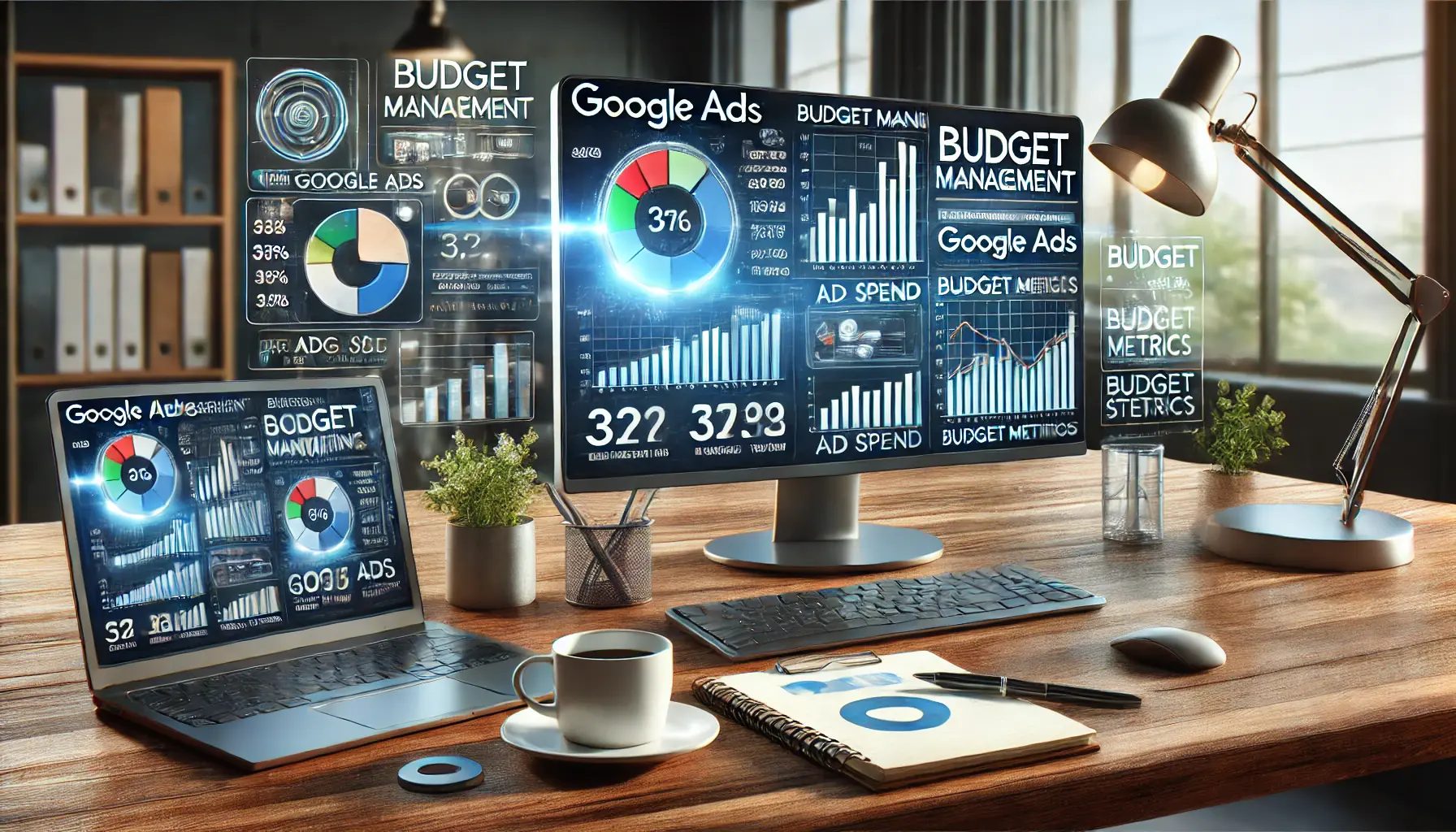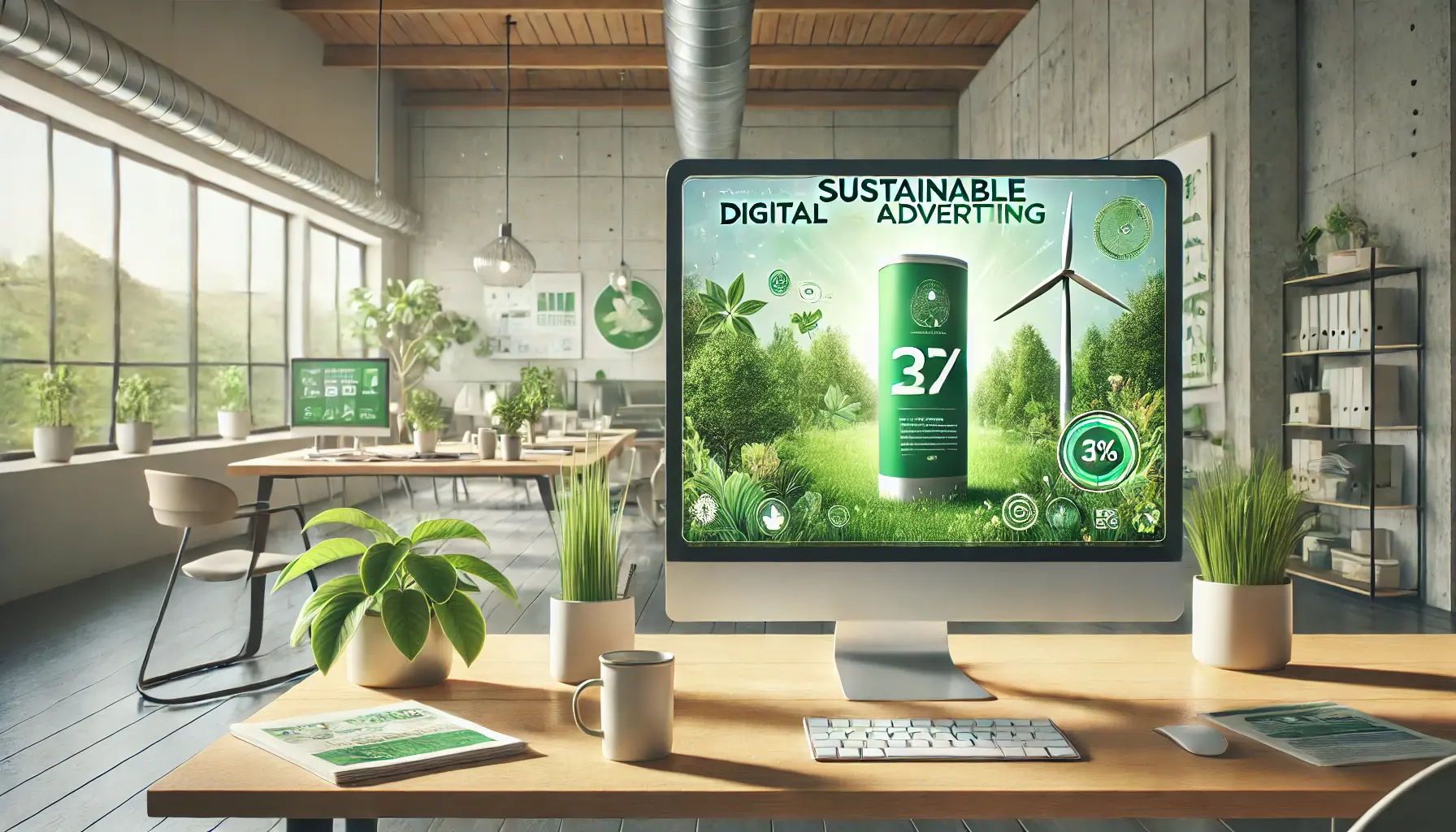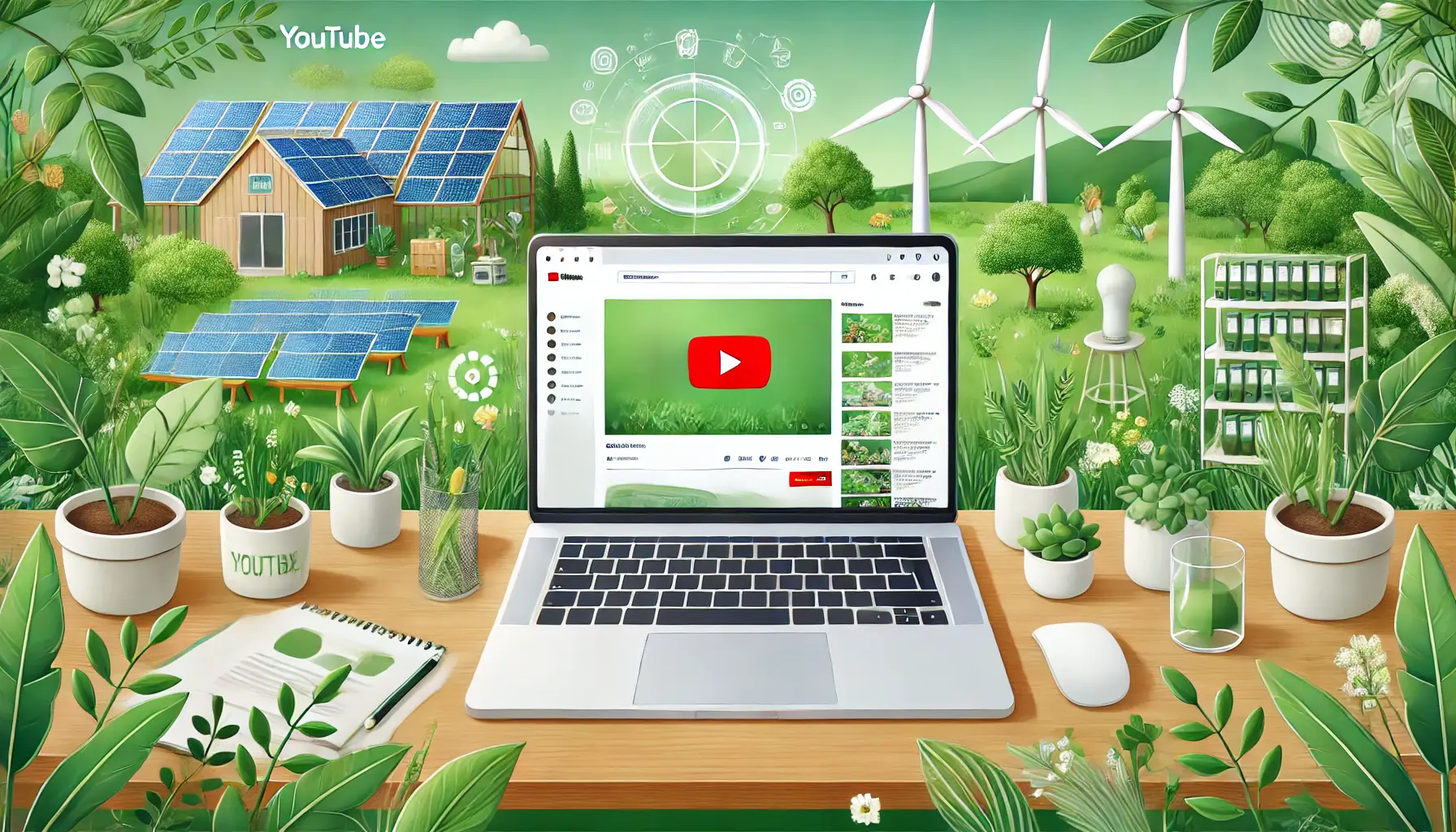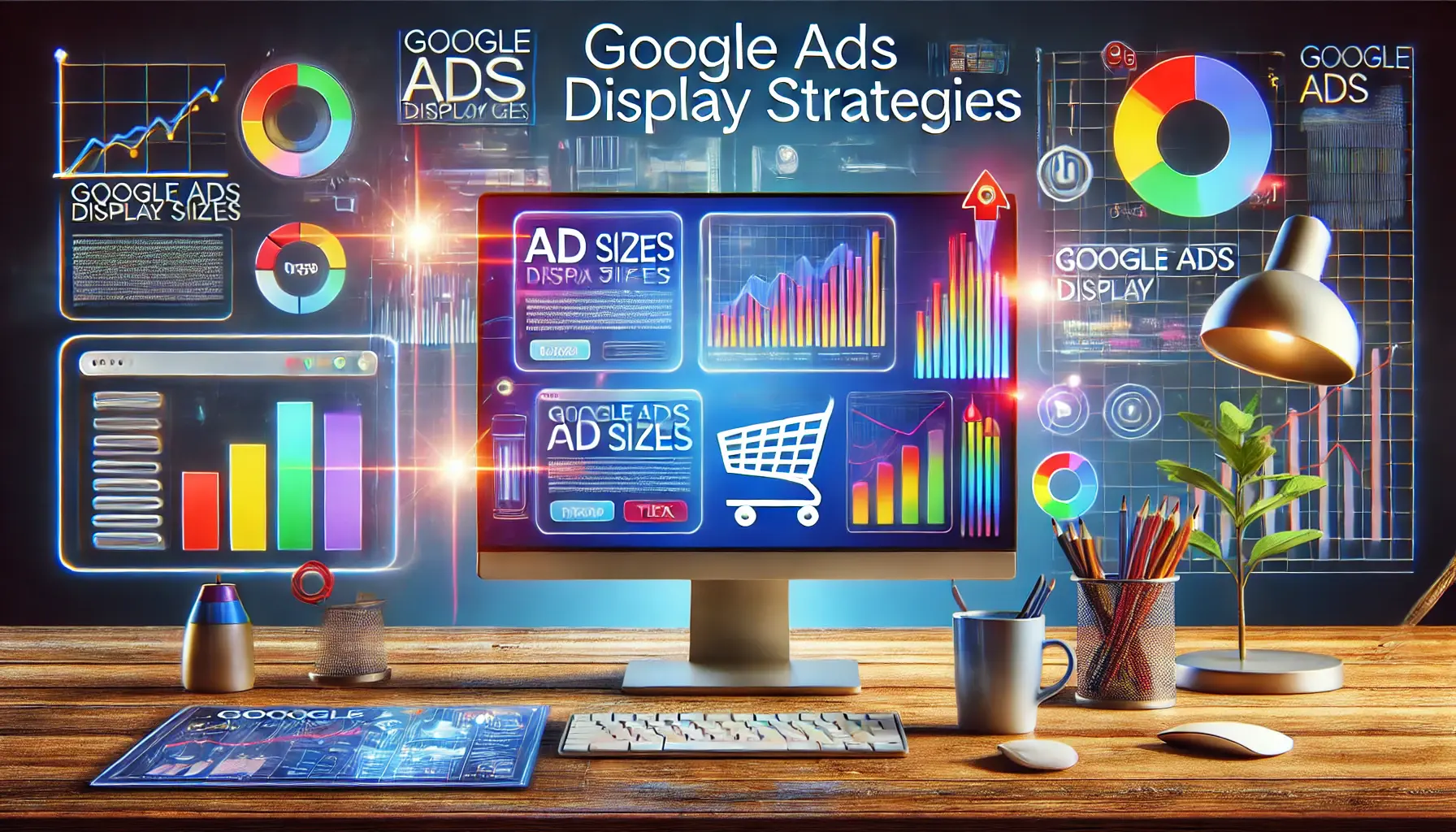In today’s digital landscape, sustainability is far more than just a buzzword; it is a must-have unto itself.
With businesses becoming ever more aware of their environmental footprints, the integration of sustainability into marketing strategies has become nothing short of essential.
This is especially true in the case of Google Display Ads, where small changes can make all the difference in the world.
But how can advertisers create effective and eco-friendly campaigns?
This article dives deep into the world of sustainable practices in Google Display Ads, providing actionable tips and insights to help you align your marketing efforts with eco-conscious goals.
- Understanding Sustainability in Digital Advertising
- Optimizing Ad Design for Sustainability
- Targeting Strategies for Sustainable Google Display Ads
- Maximizing Campaign Performance Sustainably
- Future Trends in Sustainable Google Display Advertising
- The Future of Sustainable Practices in Google Display Ads
- Frequently Asked Questions About Sustainable Practices in Google Display Ads
Understanding Sustainability in Digital Advertising
What does sustainability really mean in the context of digital advertising?
At its core, it’s about minimizing the environmental impact of your campaigns while maximizing their efficiency.
In an industry heavily reliant on data centersFacilities used to house computer systems and associated components, such as telecommunications and storage systems., servers, and energy-intensive technologies, advertisers must adopt strategies that reduce resource consumption and prioritize efficiency.

Image symbolizing the integration of sustainability into digital advertising practices.
What is Sustainability in Advertising?
Sustainability in advertising refers to practices that reduce waste, optimize energy use, and create campaigns with a minimal carbon footprintThe total greenhouse gas emissions caused directly and indirectly by an individual, organization, event, or product..
By adopting sustainable strategies, businesses can not only help the environment but also enhance their brand image and appeal to environmentally conscious consumers.
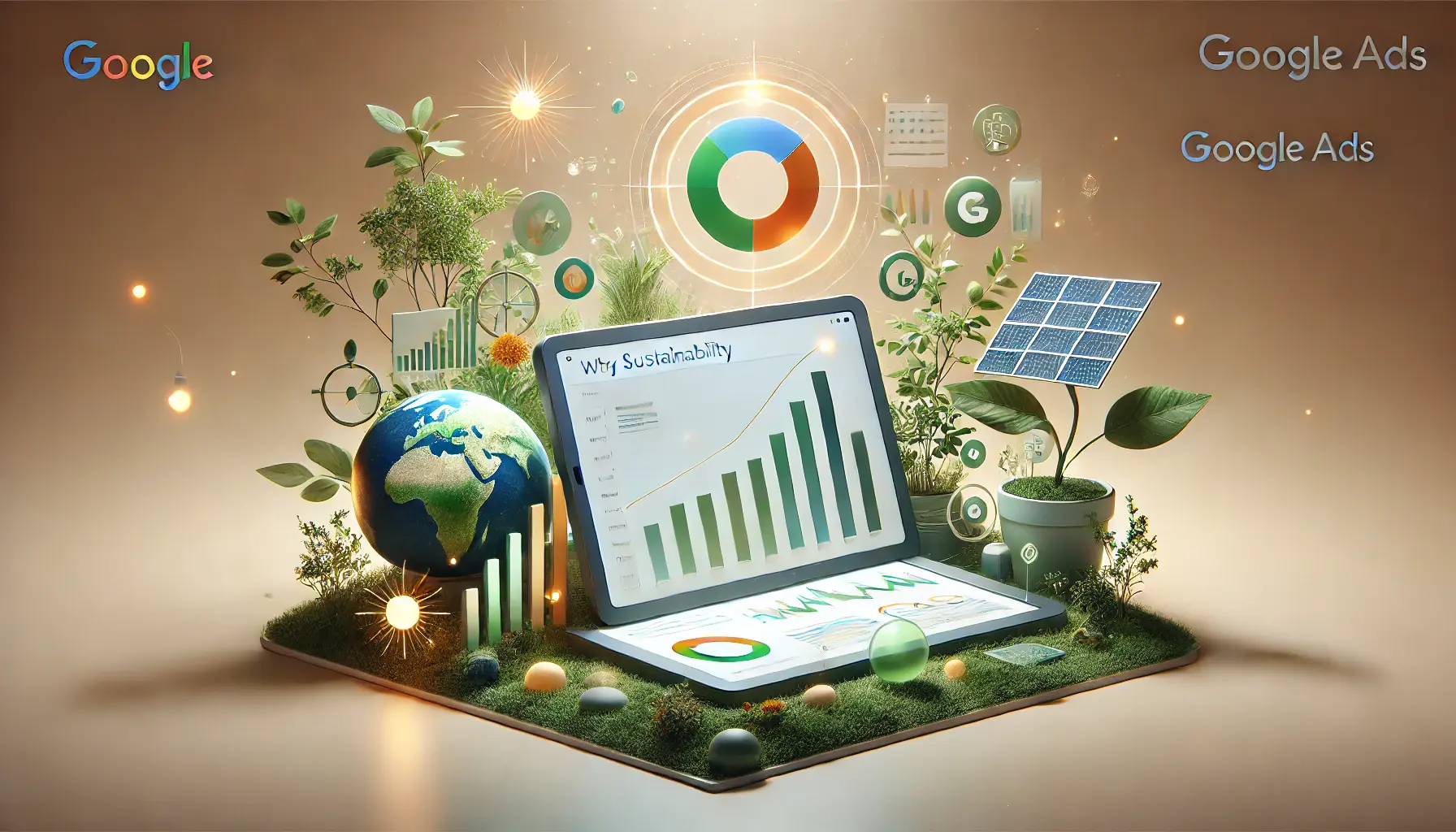
Image highlighting the importance of sustainability in Google Ads, blending technology and environmental consciousness.
Why Sustainability Matters in Google Ads
Google Ads is one of the most widely used platforms for digital marketing, serving billions of impressions daily.
This scale means even minor inefficiencies can add up to significant environmental costs.
By focusing on sustainable practices, advertisers can:
- Reduce the energy consumption of their campaigns.
- Appeal to eco-conscious audiences.
- Align with corporate social responsibility goals.

Image depicting the challenges marketers face when integrating sustainability into advertising.
Common Challenges in Sustainable Advertising
Adopting sustainable practices is not without its challenges.
Marketers often face issues such as limited knowledge about eco-friendly options, resistance to change, and balancing sustainability with performance goals.
However, these challenges can be overcome with the right strategies and tools.
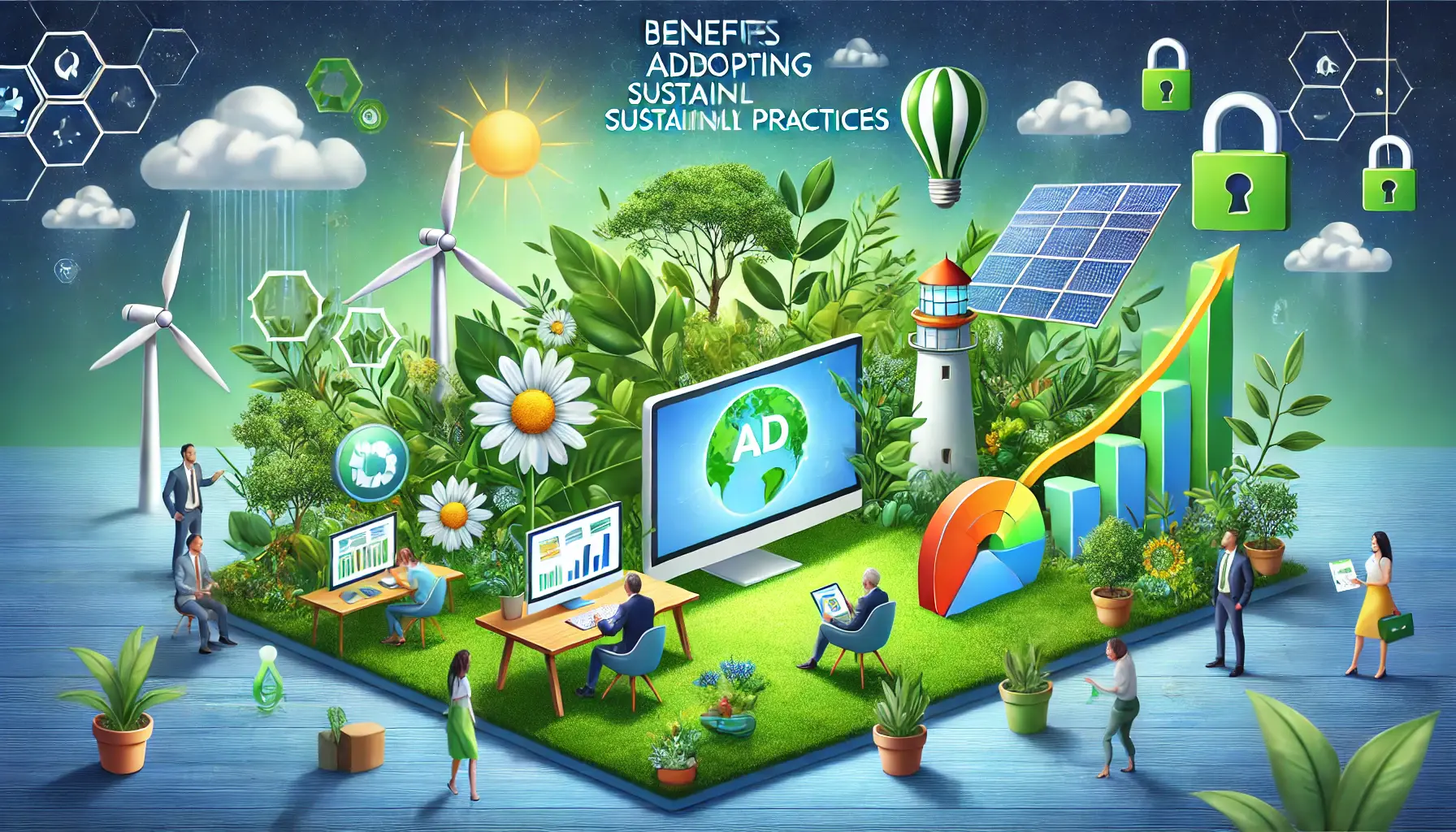
Image illustrating the positive impact of sustainable advertising practices on business growth and the environment.
Benefits of Adopting Sustainable Practices
The benefits of sustainable advertising extend beyond environmental impact.
By optimizing campaigns for sustainability, businesses can:
- Enhance campaign efficiency and reduce costs.
- Build stronger relationships with eco-conscious consumers.
- Strengthen their brand reputation in the market.
Adding sustainability to your Google Display Ads can help your company become an insightful leader and a serious player in any industry, while also contributing to a healthier planet.
Implementing sustainability in digital advertising minimizes resource consumption, enhances campaign efficiency, and aligns with eco-conscious goals.

Image showcasing the process of optimizing ad design with sustainability in mind, featuring eco-friendly elements.
Optimizing Ad Design for Sustainability
When it comes to sustainable practices in Google Display Ads, the design of your ads plays a pivotal role.
By making mindful choices during the design phase, you can significantly reduce the environmental impact of your campaigns.
Sustainable ad design doesn’t just benefit the planet—it can also improve user experience, increase campaign efficiency, and enhance your brand’s reputation as a forward-thinking, eco-conscious entity.

Image depicting the process of reducing file sizes to improve digital performance and speed.
Reducing File Sizes for Faster Load Times
Large file sizes not only slow down load times but also consume more energy, both on the server side and for end users.
Compressing image and video assets can make a big difference.
Use lightweight formats like WebP for images and ensure video ads are optimized for streaming.
Tools like TinyPNG and Adobe Media Encoder can help reduce file sizes without compromising quality.
- Use SVGs wherever possible, as they are lightweight and of high quality.
- Limit the length and complexity of animations to consume less energy.
- Avoid auto-playing video ads unless absolutely optimized for light data usage.

Image showcasing the process of designing eco-friendly visuals with nature-inspired elements.
Designing Eco-Friendly Visuals
The visuals in your ads should reflect your commitment to sustainability.
This includes choosing images and themes that resonate with eco-conscious audiences and infusing green-friendly concepts within your creative assets.
Additionally, opt for visuals that prioritize minimalism and clarity, which are easier to process and use fewer resources.
- Apply natural imagery and color schemes to evoke eco-friendliness.
- Avoid high-energy themes such as flashing animations or rapid transitions.
- Ensure visuals communicate your message clearly without excess detail.

Image illustrating the use of energy-efficient color palettes in digital design.
Using Energy-Efficient Color Palettes
While it may seem minor, the colors you choose for your ads can impact energy consumption.
Darker colors and simple designs are less demanding on devices, particularly those with OLEDOrganic Light-Emitting Diode, a type of display technology used in screens that offers energy efficiency. screens.
Tools like Coolors and Adobe Color can help you choose energy-efficient palettes that still capture attention.
- Use dark mode designs where appropriate for OLED screen efficiency.
- Avoid bright, high-energy colors that require more power to display.
- Stick to a minimal number of colors to simplify designs and reduce data load.

Image illustrating the creation of sustainable ad creatives with an emphasis on minimalist and eco-friendly design.
Best Practices for Sustainable Ad Creatives
Creating sustainable ad creatives requires a balance of innovation and responsibility.
By implementing best practices, you can create ads that are visually appealing, effective, and eco-friendly:
- Test your ads on multiple devices to ensure they load fast and efficiently.
- Use responsive design to minimize the number of different versions of the same ad.
- Update and refresh your creatives regularly to avoid irrelevant assets and minimize redundancy.
By optimizing your ad design with sustainability in mind, you contribute to a greener digital environment while ensuring your campaigns remain impactful and engaging.
Reducing file sizes and using energy-efficient visuals not only lower environmental impact but also improve user experience.
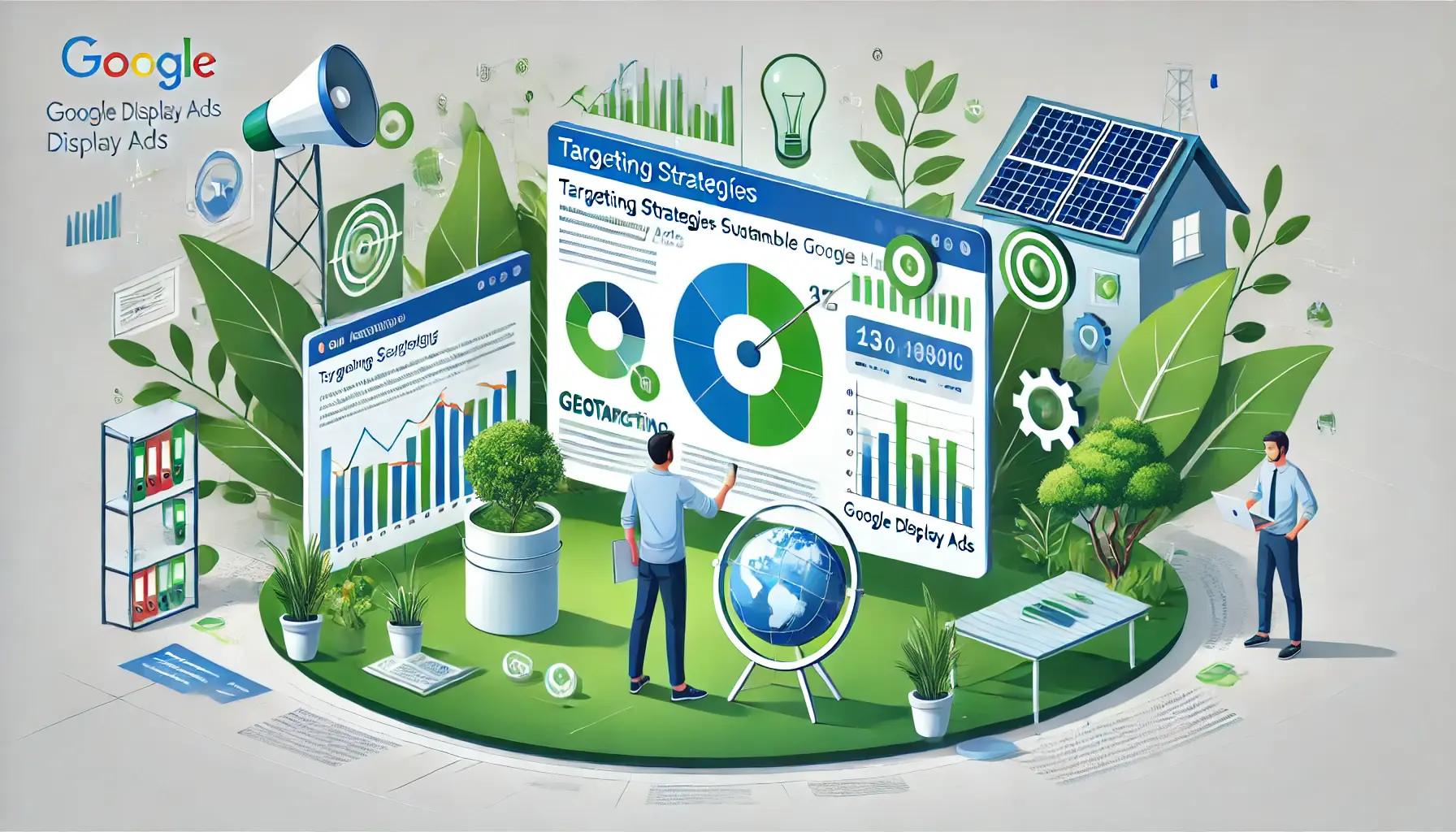
Image depicting targeting strategies in Google Display Ads with an emphasis on sustainability and precision.
Targeting Strategies for Sustainable Google Display Ads
Targeting strategies are a cornerstone of any successful Google Display Ads campaign.
When designed with sustainability in mind, these strategies can help you minimize ad waste, reach the right audience more efficiently, and reduce the environmental footprint of your campaigns.
By focusing on precision and efficiency, you not only enhance your campaign’s performance but also contribute to a more sustainable digital ecosystem.
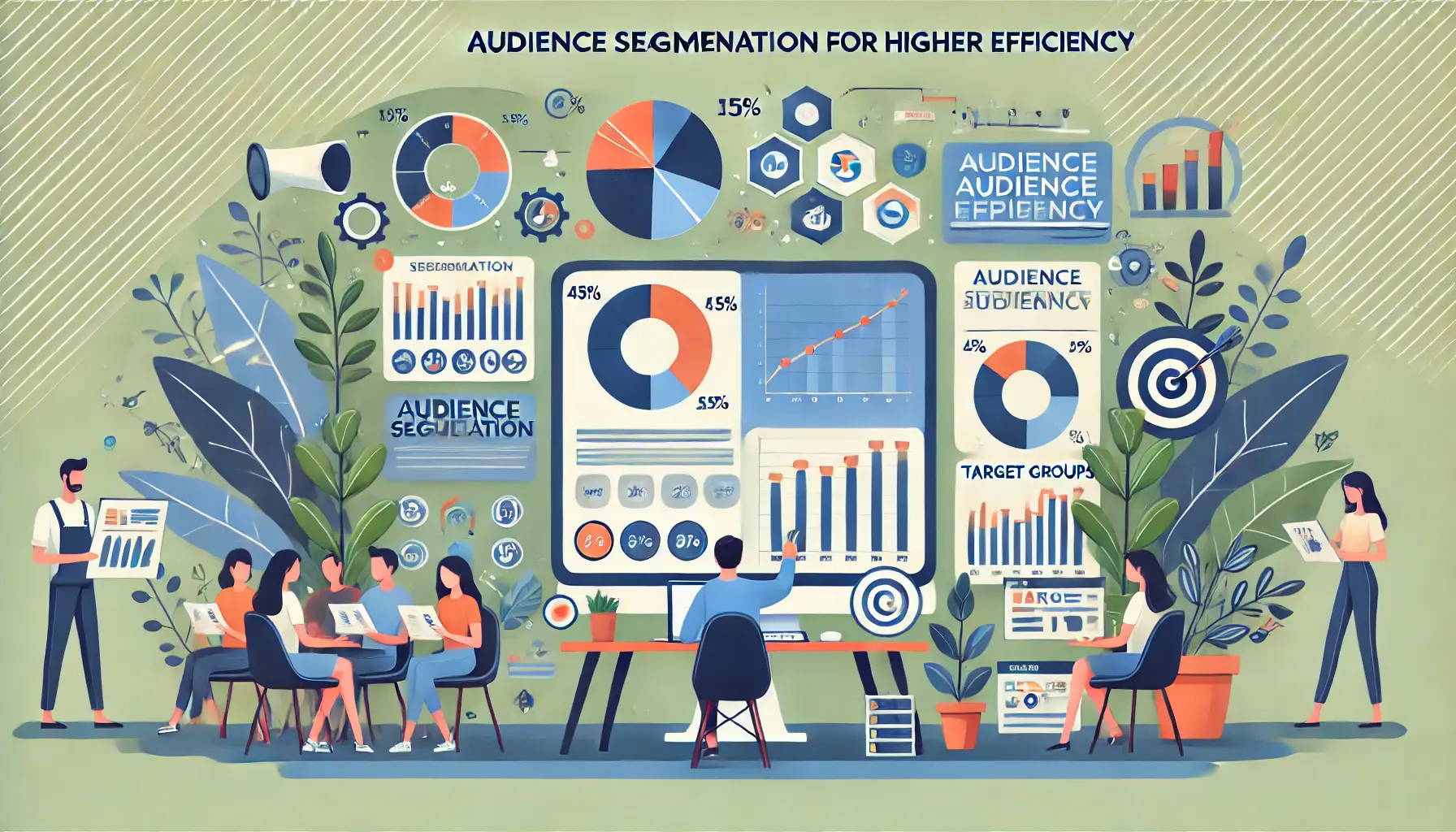
Image showcasing audience segmentation for efficient and sustainable advertising strategies.
Audience Segmentation for Higher Efficiency
Audience segmentation is a powerful tool for ensuring your ads reach the most relevant users.
By carefully analyzing data and dividing your audience into smaller, targeted groups, you can deliver tailored messages that resonate with specific needs and interests.
This approach reduces wasted impressions and conserves resources.
- Use demographic data such as age, gender, and income to refine targeting.
- Leverage behavioral data to focus on users with a high likelihood of conversion.
- Exclude irrelevant audiences to avoid unnecessary ad spend and energy usage.
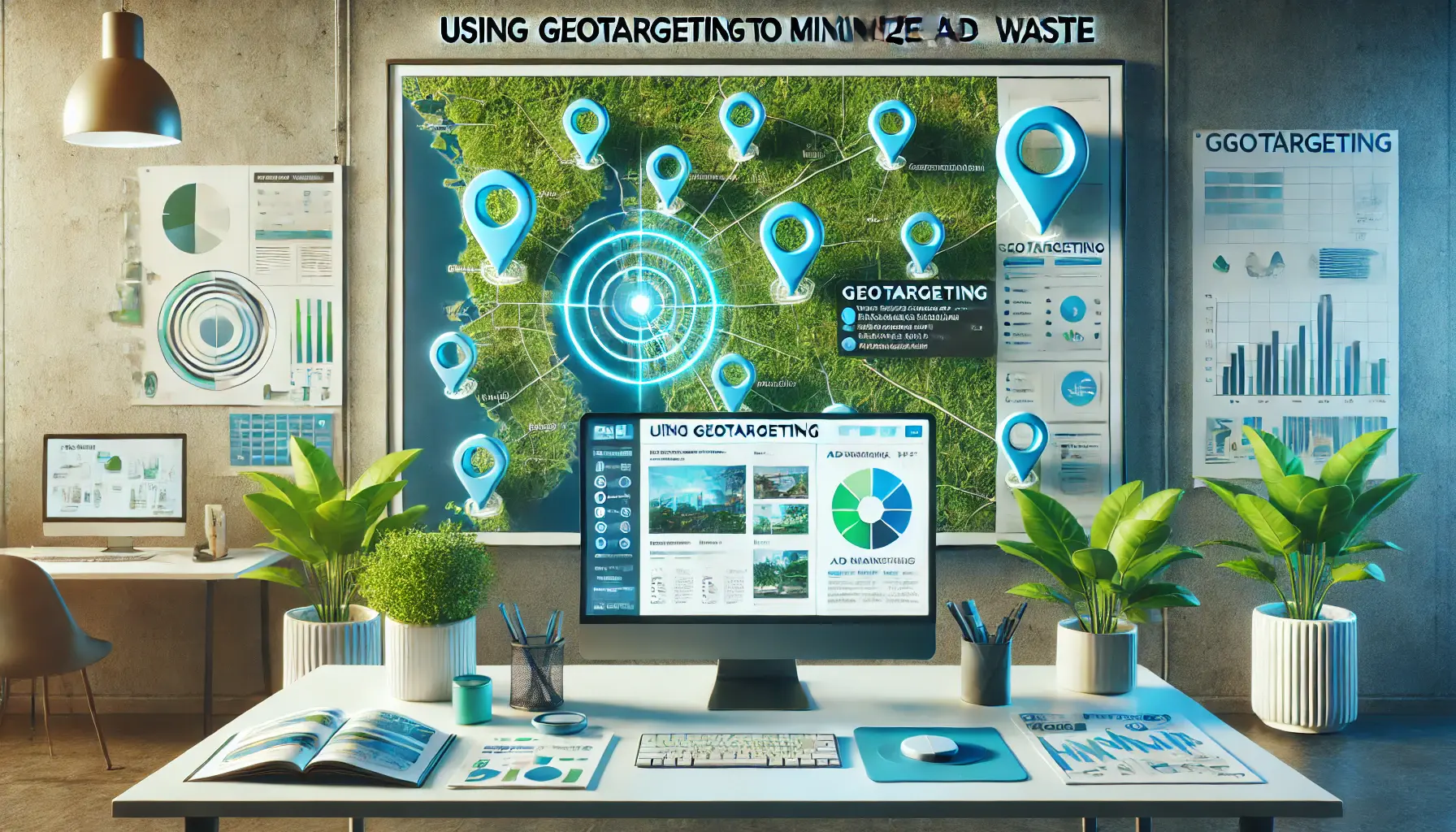
Image illustrating the use of geotargeting in digital advertising to reduce ad waste and increase efficiency.
Using Geotargeting to Minimize Ad Waste
Geotargeting allows you to display ads in specific geographic locations, ensuring your campaigns are relevant to the users in those areas.
This technique reduces unnecessary ad impressions and focuses your resources where they are most effective.
- Target areas where your products or services are available to avoid wasted reach.
- Take advantage of radius targeting to reach users within a certain distance from your business.
- Combine geotargeting with local language and cultural preferences for better engagement.
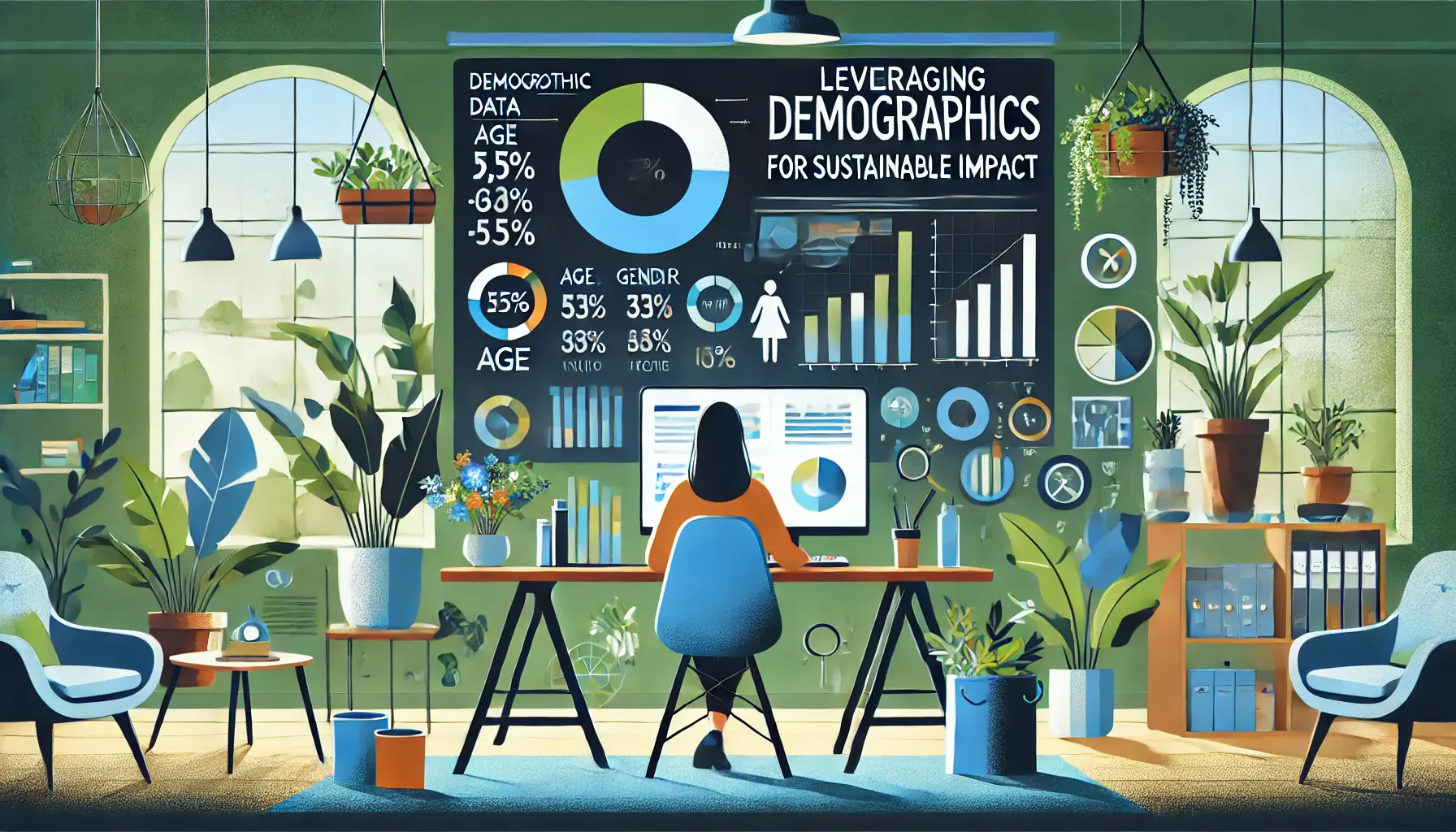
Image depicting the use of demographic data to create a sustainable impact in advertising, with a focus on eco-conscious targeting.
Leveraging Demographics for Sustainable Impact
With demographic targeting, you can align your campaigns with users who are most likely to interact with your brand.
This focused effort reduces ad spend and energy usage while improving relevance and conversions.
- Target specific groups that align with your typical product audience.
- Screen prospective customers by household income to target those with affordability toward the product being pitched.
- Exclude demographics that are unlikely to benefit from your products or services.

Image depicting the alignment of targeting strategies with campaign objectives for efficient and sustainable advertising.
Aligning Targeting Goals with Campaign Objectives
Effective targeting strategies align closely with your overall campaign objectives.
Whether your goal is brand awareness, lead generation, or sales, sustainable targeting ensures that your ads are optimized for the desired outcome with minimal resource use.
- Set clear objectives for each campaign to guide your targeting decisions.
- Use remarketing to re-engage users who have already interacted with your brand.
- Monitor performance metrics to adjust targeting strategies for better efficiency.
By adopting these targeting strategies, you can develop highly effective and sustainable Google Display Ads campaigns.
Precision targeting not only cuts down on waste but also ensures your resources are used effectively to engage the right audience, contributing to a greener and more impactful marketing effort.
Effective targeting strategies, such as geotargeting and audience segmentation, reduce ad waste and help reach eco-conscious audiences more efficiently.
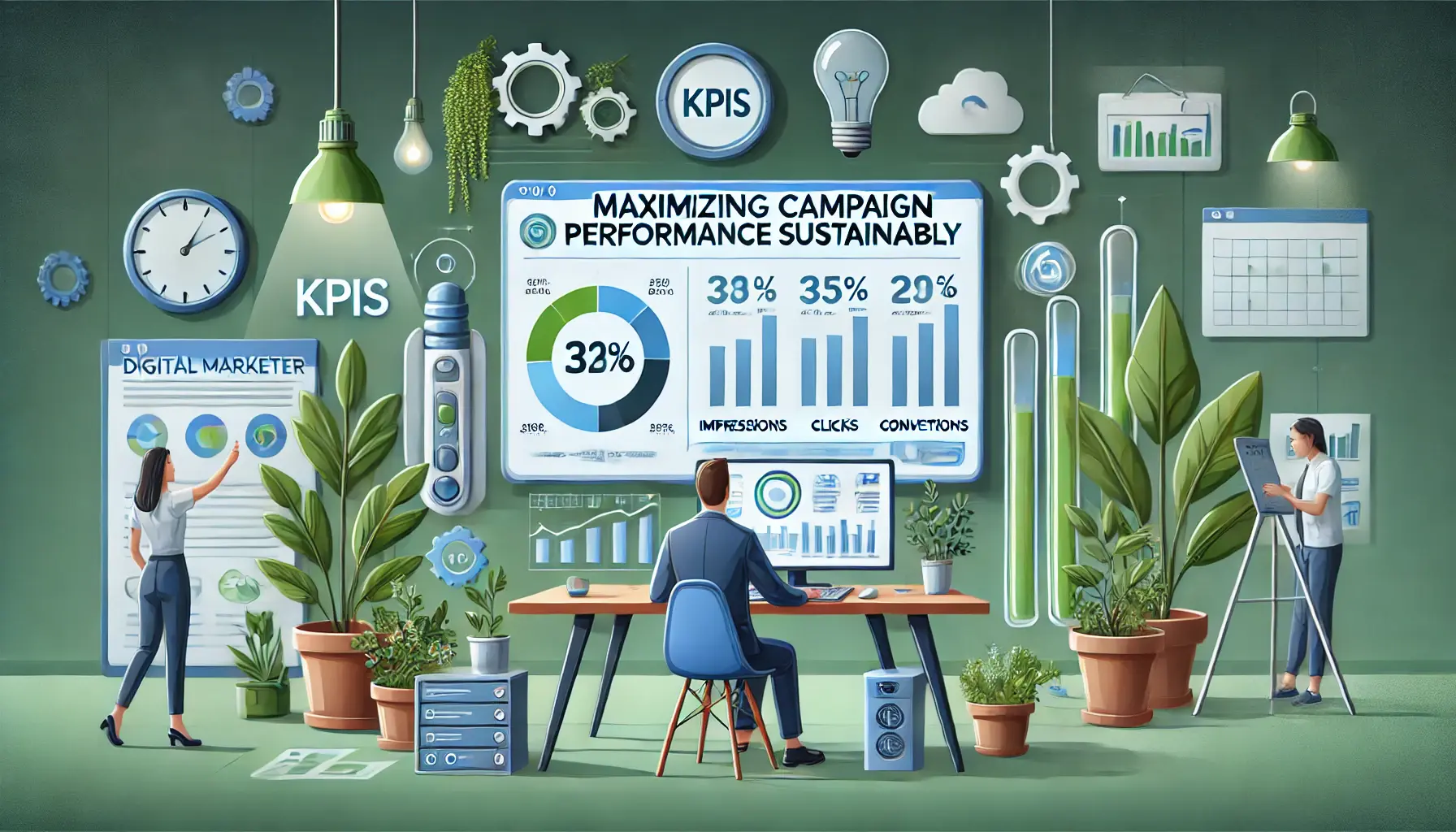
Image depicting the process of maximizing digital campaign performance sustainably, with a focus on eco-conscious strategies.
Maximizing Campaign Performance Sustainably
Incorporating sustainability into Google Display Ads doesn’t mean sacrificing performance.
In fact, sustainable practices often go hand in hand with efficiency and cost-effectiveness.
By optimizing your campaigns for sustainability, you can reduce waste, save resources, and still achieve impressive results.
The key lies in leveraging smart tools, analyzing data effectively, and ensuring every aspect of your campaign is purpose-driven.

Image depicting the implementation of automated bidding strategies in digital advertising with an emphasis on efficiency and sustainability.
Implementing Automated Bidding Strategies
Automated bidding strategies, enabled through Google’s machine learning, can be huge enablers of sustainable campaign performance.
These strategies automatically optimize bids in real time to make sure you get the most value from each impression without overspending or overusing resources.
- Employ Target CPA for effective cost optimization with a focus on conversions.
- Use Target ROAS to ensure maximum revenue with efficient use of your budget.
- Enable Enhanced CPC (Cost Per Click) for fine-tuning bids while maintaining control over spending.

Image depicting the process of analyzing data to optimize resource usage in digital advertising.
Analyzing Data for Minimal Resource Utilization
Regularly analyzing campaign data can help identify inefficiencies and refine your strategy.
Focus on metrics that matter and avoid wasting resources on underperforming areas.
Tools like Google Analytics and Google Ads reports provide actionable insights.
- Monitor CTR and Conversion Rate to identify strengths and weaknesses.
- Pause or adjust low-performing ads to avoid wasting impressions and energy.
- Conduct A/B testing to refine creatives and targeting for better efficiency.
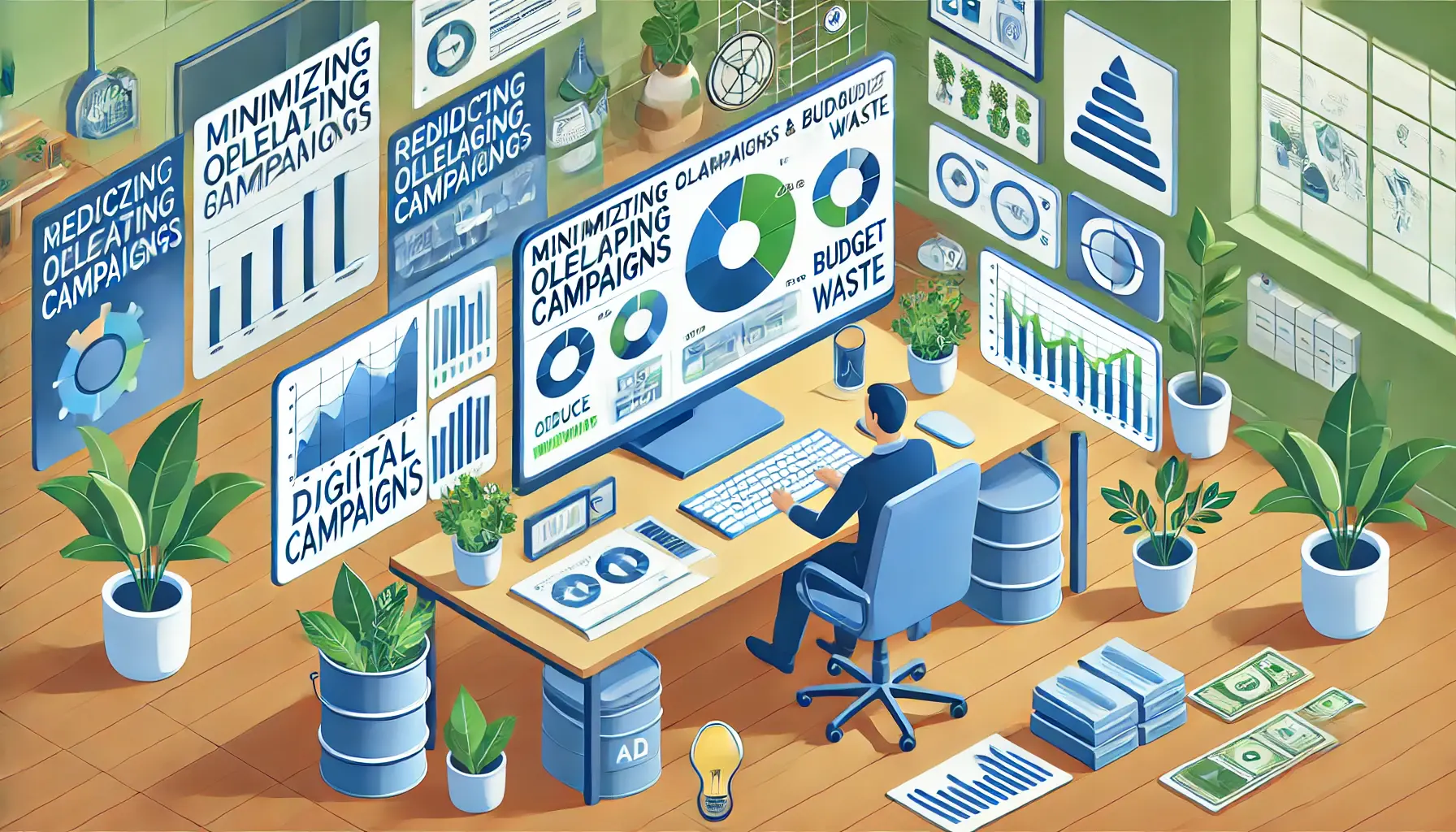
Image depicting the process of minimizing overlapping campaigns and optimizing budgets in digital advertising.
Minimizing Overlapping Campaigns and Budget Waste
Running overlapping campaigns can lead to unnecessary internal competitiveness within your ads, inflate their cost, and waste resources.
Consolidation of these campaigns with explicitly laid-out objectives helps avert such situations.
- Group similar ads within a single campaign to reduce duplication of effort.
- Set individual budgets to avoid keyword overlap.
- Regularly review your campaign structure to ensure alignment with objectives.
Image depicting the process of tracking key metrics for sustainable digital advertising campaigns.
Tracking Key Metrics for Truly Sustainable Campaigns
Tracking KPIs ensures that your campaigns are effective and viable.
Pay close attention to metrics that best reflect your goals, and modify your strategies based on these insights.
- Track impressions, clicks, and conversions to measure efficiency.
- Monitor bounce rates to identify areas for improving landing pages.
- Assess overall energy and cost savings achieved through optimized campaigns.
Sustainable maximization of campaign performance is more than cost-cutting; it is a balancing act between effectiveness and environmental responsibility.
Applying these practices in your Google Display Ads strategy will help you drive meaningful results and contribute to a greener digital advertising landscape.
Adopting automated bidding and regularly analyzing key metrics ensures sustainable and cost-effective campaign performance.

Image depicting the future of sustainable Google Display Advertising, focusing on emerging technologies and eco-friendly innovations.
Future Trends in Sustainable Google Display Advertising
The landscape of digital advertising is continuously evolving, and sustainability is becoming a key focus for advertisers.
As technology advances and consumer preferences shift, integrating sustainable practices into Google Display Ads will be essential for staying ahead.
By keeping an eye on future trends, businesses can align their strategies with emerging technologies and changing market demands to create campaigns that are both effective and eco-friendly.

Image depicting the integration of emerging technologies like AI and blockchain with eco-friendly elements in digital advertising.
Emerging Technologies for Sustainable Ads
Innovative technologies are creating the future for sustainable advertising.
From AI-powered optimization to blockchainA decentralized digital ledger used to record transactions across multiple systems securely. for transparency, these technologies are helping advertisers reduce waste and improve efficiency.
- Leverage AI to optimize ad placements and eliminate irrelevant impressions.
- Adopt blockchain technology to ensure transparency in ad spend and minimize fraud.
- Explore programmatic advertising for more precise targeting and efficient use of resources.
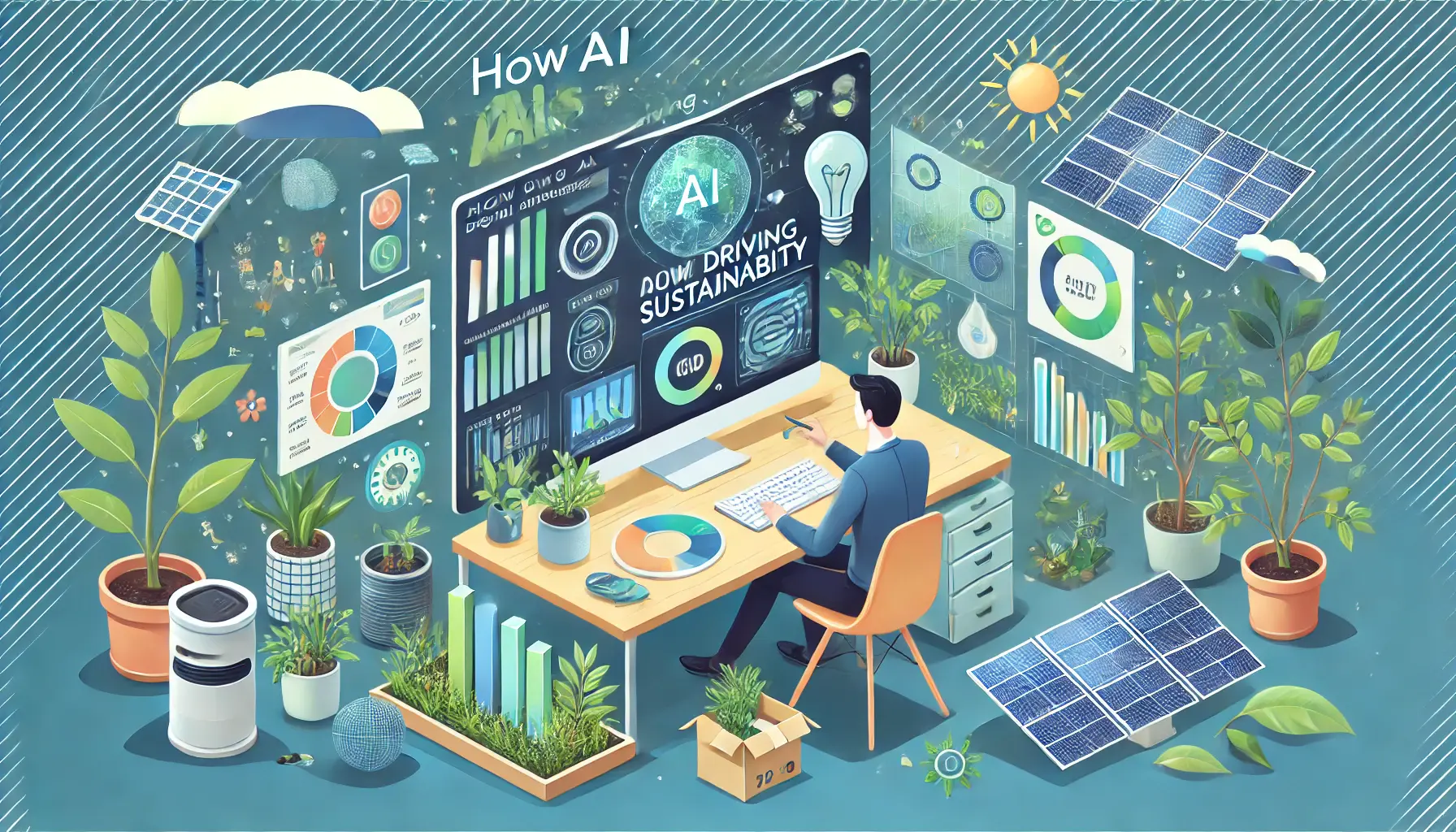
Image illustrating how AI is driving sustainability in advertising through optimization and eco-conscious practices.
How AI is Driving Sustainability
Artificial intelligence offers a new avenue in the battle for sustainable advertising.
AI-driven algorithms sort through massive datasets to optimize campaigns, reduce waste, and better target audiences.
- Leverage AI to predict user behavior and efficiently serve relevant ads.
- Utilize machine learning models to enhance campaign performance iteratively.
- Automate regular tasks to save both time and energy.

Image depicting how consumer behavior influences sustainable practices in advertising, with a focus on eco-conscious trends.
How Consumer Behavior Shapes Sustainable Practices
Today’s consumers are more environmentally conscious and expect the same from brands.
This trend has been pushing advertisers to make their campaigns greener.
- Emphasize messaging that shows your brand is committed to sustainability.
- Run campaigns that resonate with eco-conscious audiences.
- Use consumer feedback to refine your sustainability efforts.
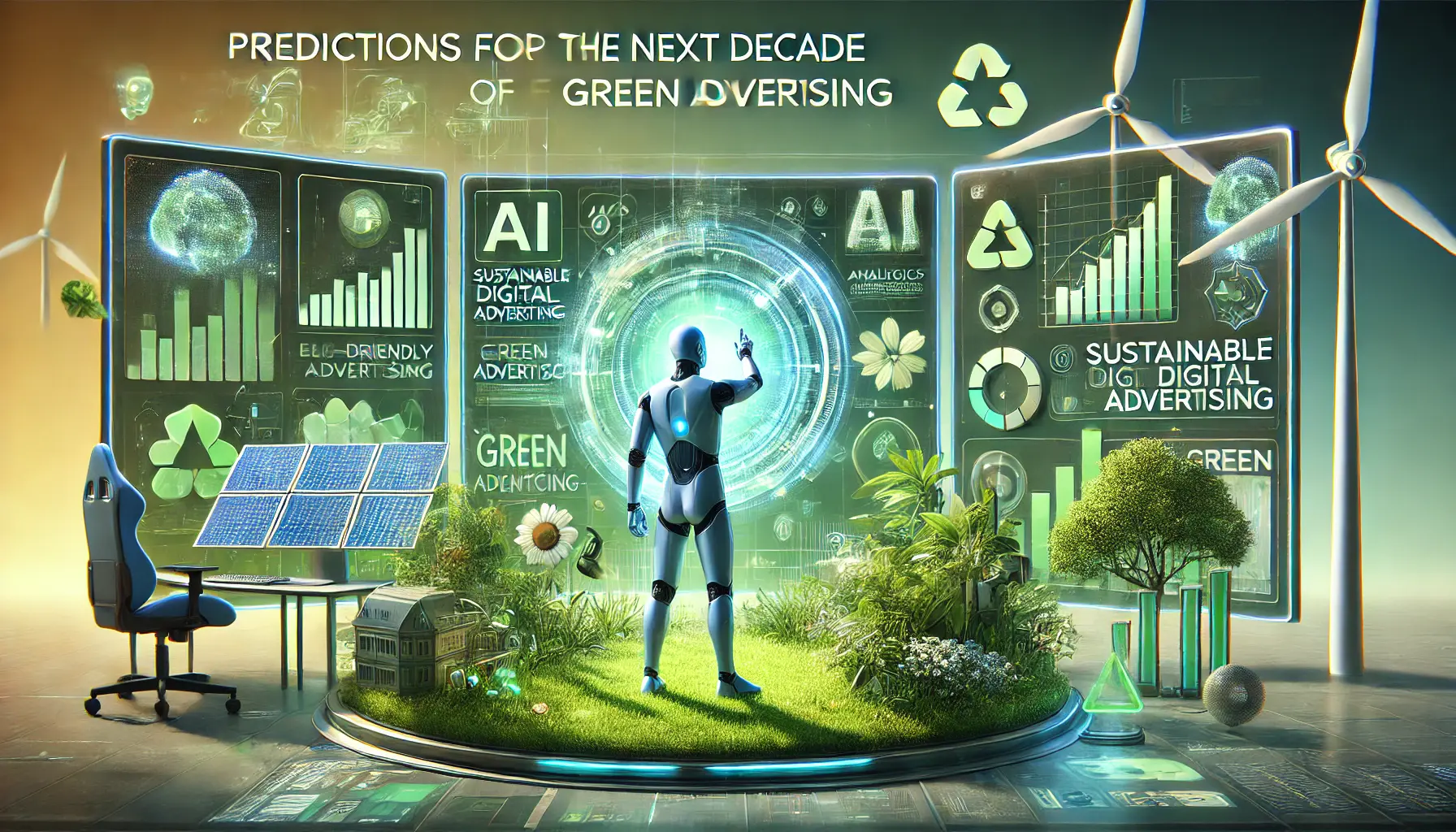
Image depicting the future of sustainable digital advertising, focusing on eco-friendly trends and practices over the next decade.
Predictions for the Next Decade of Green Advertising
The future of green advertising holds exciting possibilities.
As more businesses prioritize sustainability, the industry will see significant changes that benefit both the planet and advertisers.
- Increased adoption of carbon-neutral advertising practices.
- Wider use of energy-efficient ad formats and designs.
- Growing collaboration between advertisers and environmental organizations.
By staying on top of these trends and proactively integrating sustainability, businesses can reduce their environmental impacts while positioning themselves as future leaders in the digital advertising landscape.
The future of Google Display Ads is green, and embracing sustainability is key to achieving long-term success.
AI-driven optimization and carbon-neutral advertising practices will shape the future of sustainable digital marketing.
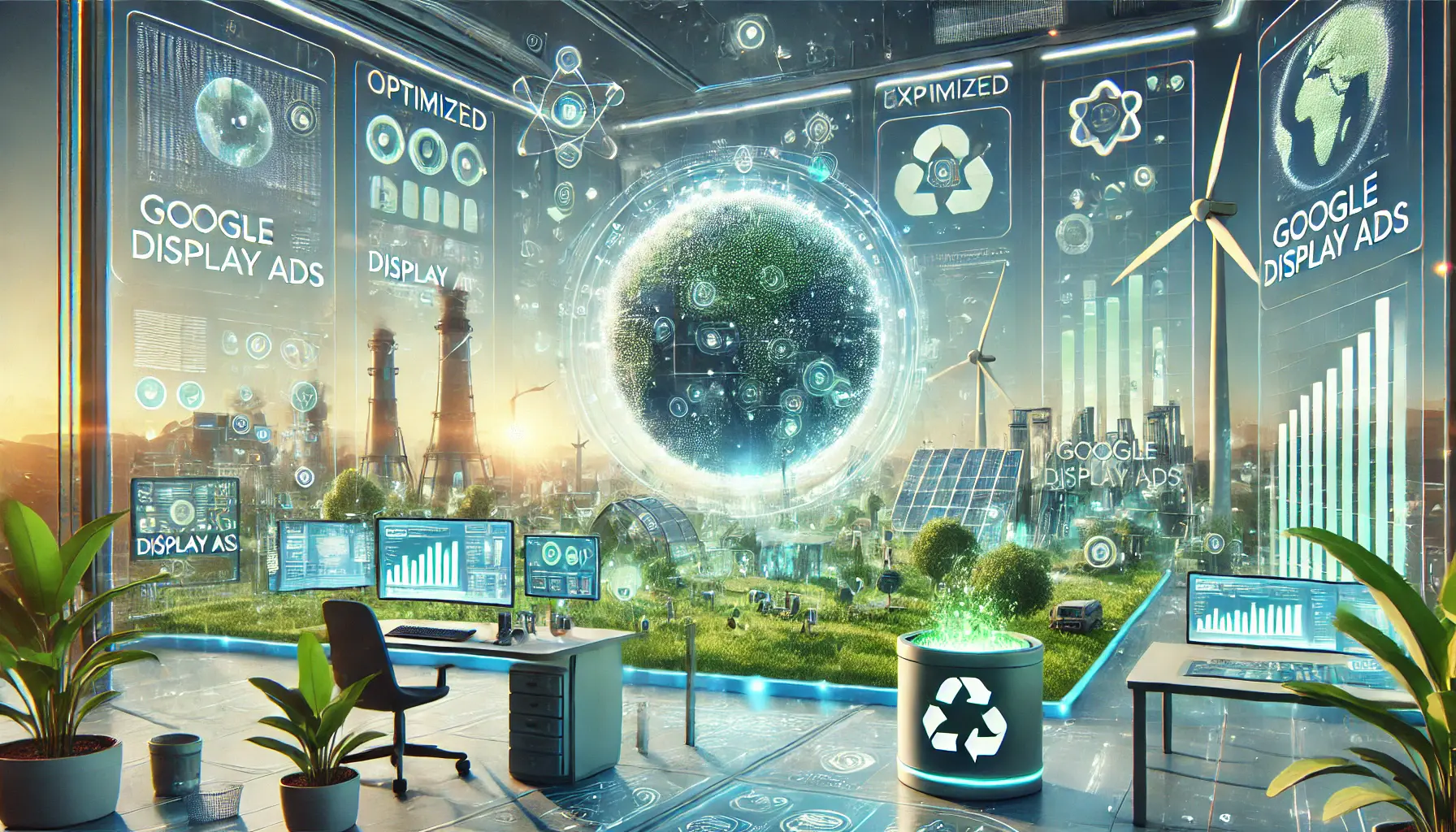
Image depicting the future of sustainable practices in Google Display Ads, highlighting eco-friendly technologies and innovations.
The Future of Sustainable Practices in Google Display Ads
As businesses continue to navigate the evolving landscape of digital advertising, integrating sustainable practices into Google Display Ads campaigns has become not only a necessity but also a competitive advantage.
From optimizing ad design to leveraging advanced targeting strategies and emerging technologies, sustainability offers immense potential to enhance campaign performance while minimizing environmental impact.

Image showcasing the key elements of sustainable advertising strategies, highlighting eco-friendly practices and tools.
Key Takeaways from Sustainable Advertising Strategies
In this article, we explored how advertisers can adopt green practices for impactful Google Display Ads campaigns.
Here’s a quick summary:
- Optimize ad design with energy-efficient visuals, reduced file sizes, and minimalist color palettes to greatly reduce environmental impact.
- Implement advanced targeting strategies, including audience segmentation, geotargeting, and demographic alignment, to reduce ad waste and reach highly relevant audiences.
- Maximize campaign performance sustainably by using automated bidding strategies, analyzing key metrics, and minimizing overlapping campaigns to conserve resources.
- Embrace emerging trends like AI-driven optimization, blockchain for transparency, and consumer-driven sustainability to shape the future of Google Display Ads.
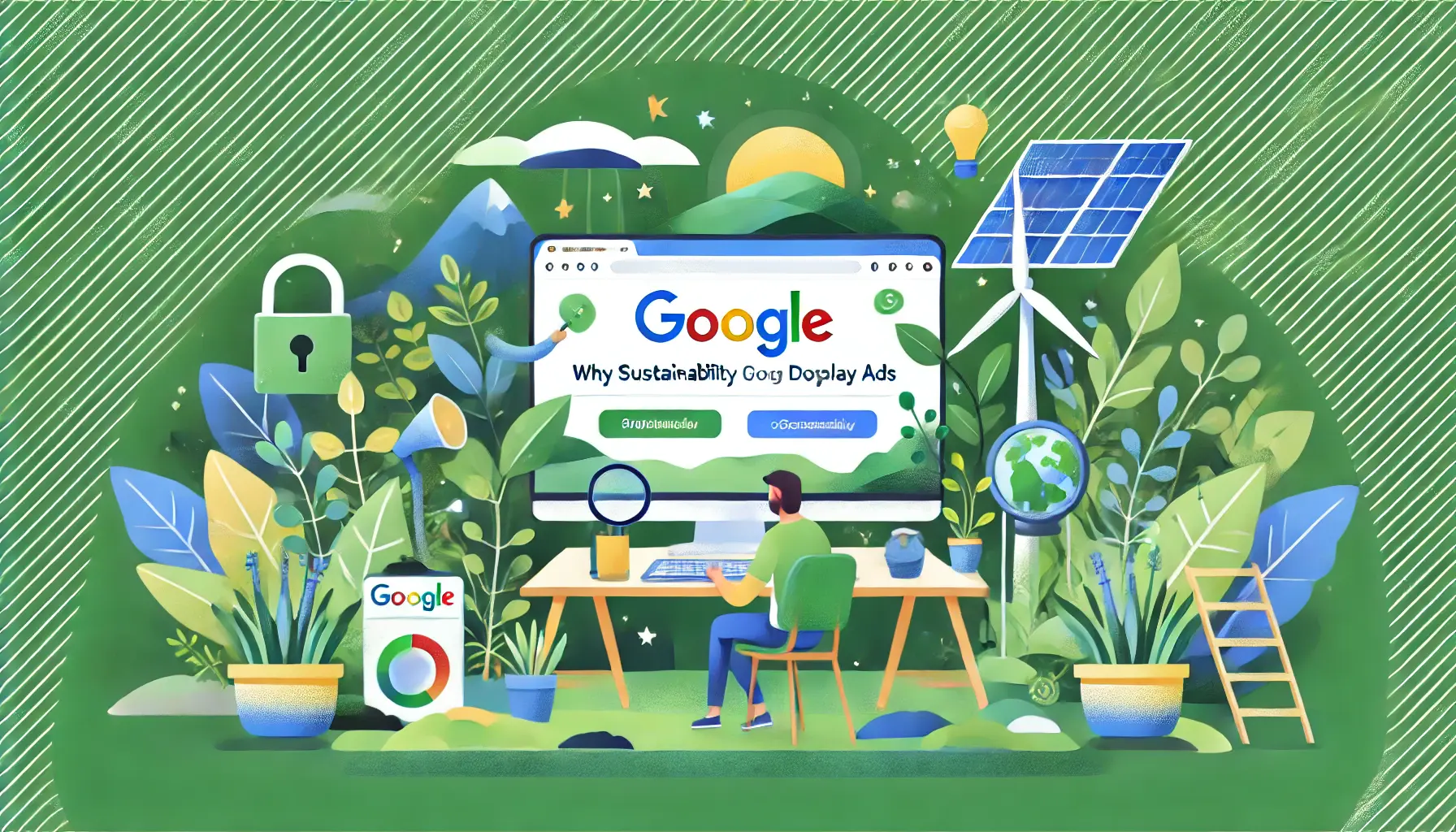
Image illustrating the importance of sustainability in Google Display Ads, emphasizing eco-friendly practices in digital advertising.
Why Sustainability Matters in Google Display Ads
Sustainability is no longer a secondary consideration in advertising; it has become a defining factor in building trust, loyalty, and success within an increasingly eco-conscious market.
By adopting sustainable practices, businesses can:
- Demonstrate corporate social responsibility.
- Connect with environmentally conscious consumers who value ethical practices.
- Streamline campaign efficiency while reducing costs and resource consumption.

Image representing the future of digital advertising, emphasizing sustainability and eco-conscious practices.
Moving Forward: Embracing a Greener Digital Landscape
Sustainability is the future of Google Display Ads.
As technologies advance and consumer expectations evolve, businesses must proactively incorporate sustainable practices into their advertising campaigns.
This not only keeps them relevant and competitive but also contributes to a healthier planet.
It provides new opportunities to influence with leading-edge concepts that align with ecological aspirations.
By taking action today, businesses can set themselves apart as innovative leaders in their industry.
Creating campaigns that are effective, efficient, and environmentally responsible is not just a trend—it is the path to long-term success and a greener future.
Incorporating sustainable practices now prepares businesses for future digital trends while contributing to a greener planet.

Image representing the concept of exploring sustainable practices in Google Display Ads, with an emphasis on eco-friendly solutions.
Your campaigns can be managed by an agency specialized in Google Ads, check out our service page.
Frequently Asked Questions About Sustainable Practices in Google Display Ads
This section answers the most common questions regarding the implementation of sustainability in running Google Display Ads campaigns through clear and concise answers to help you put this into effective practice.
Sustainable practices include optimizing ad design, targeting efficiently, and reducing waste in resources while maintaining high campaign performance with minimal environmental impact.
Optimize ad design by using energy-efficient visuals, reducing file sizes, and employing minimalist color schemes to lower energy consumption and improve load times.
Sustainability builds trust with eco-conscious consumers, reduces environmental impact, and enhances campaign efficiency, helping businesses save costs while maintaining a positive reputation.
AI optimizes ad placements, predicts user behavior, and automates tasks, reducing resource use while improving targeting accuracy and overall campaign efficiency.
Geotargeting minimizes waste by delivering ads to relevant locations, ensuring campaigns are resource-efficient and aligned with audience needs, thereby reducing unnecessary impressions.
Advanced targeting strategies, such as audience segmentation and demographic alignment, reduce ad waste by focusing on relevant audiences, ensuring resources are used effectively.
Trends like AI-driven optimization, blockchain for transparency, and consumer-driven demands for eco-friendly practices are shaping the future of sustainable digital advertising.
Yes, sustainable advertising streamlines campaigns, reduces resource consumption, and optimizes targeting, leading to lower costs while maintaining or even improving performance.
Carbon-neutral advertising involves offsetting the emissions generated by ad campaigns, ensuring a net-zero environmental impact while promoting eco-friendly business practices.


